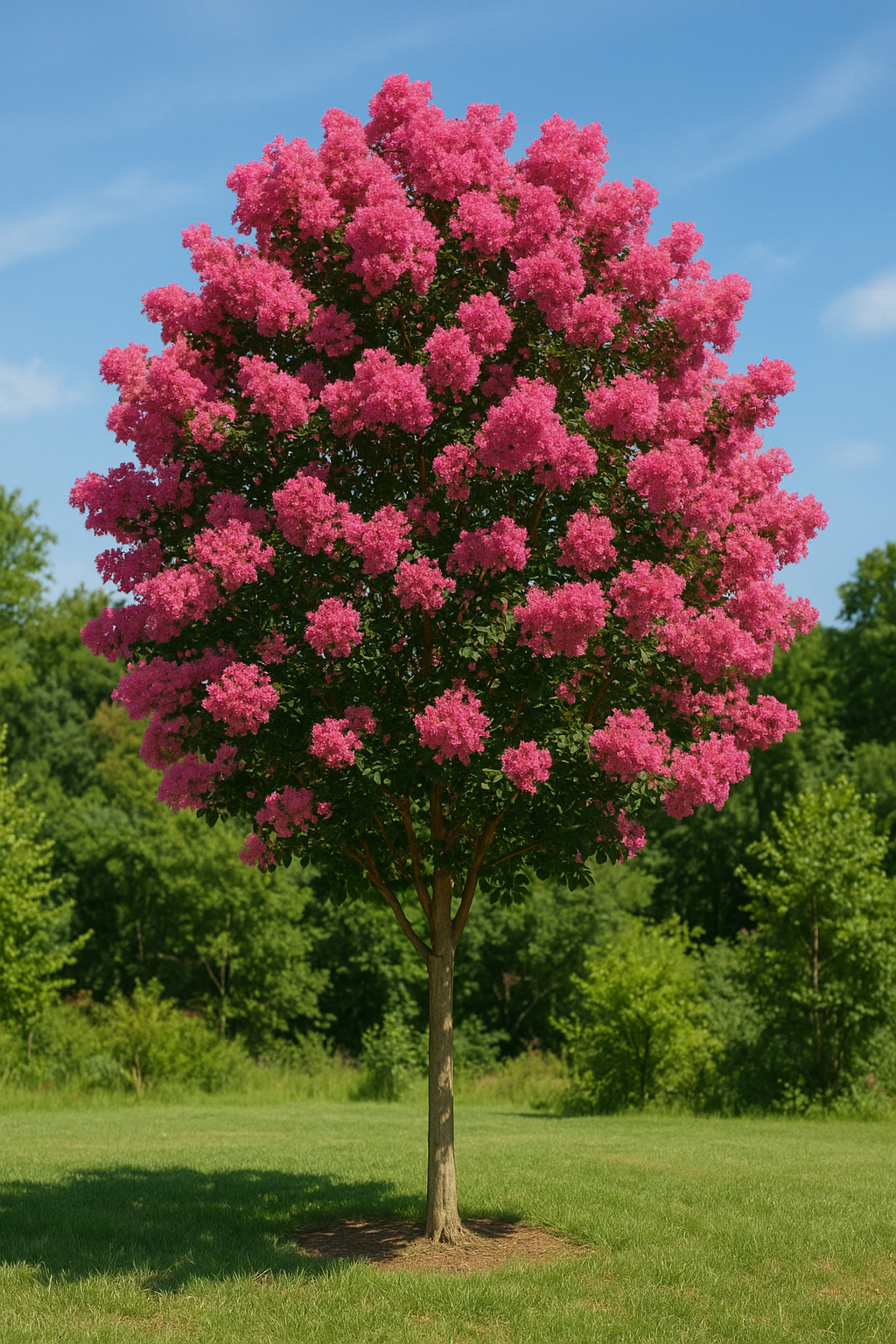Common Crape Myrtle Tree Seeds
Common Crape Myrtle Tree Seeds
Couldn't load pickup availability
Common Crape Myrtle Tree
(Lagerstroemia indica)
Lagerstroemia indica, commonly called Crape Myrtle (sometimes spelled "Crepe Myrtle"), is a deciduous, multi-stemmed shrub or small tree, beloved for its spectacular summer flowers, beautiful bark, and vibrant fall foliage.
Origin: Native to China and Korea, but widely cultivated around the world, especially in warmer climates like the southeastern United States.
Size: Depending on the cultivar, it can range from a small shrub (~3 feet tall) to a medium-sized tree (~20–30 feet tall).
Flowers: Blooms typically in mid to late summer, producing large, showy clusters (panicles) of pink, white, red, purple, or lavender flowers. The petals have a crinkled texture, resembling crepe paper — hence the common name.
Leaves: Oval-shaped, glossy green in summer, turning yellow, orange, or red in fall.
Bark: Very attractive; smooth, peeling bark in shades of gray, tan, and cinnamon.
Growth Habit: Often multi-trunked with an open, airy crown. Can be pruned to maintain a single trunk form.
Hardiness: Generally hardy in USDA Zones 7–9, though newer cultivars can survive in zone 6 with protection.
Sun Requirements: Needs full sun (at least 6 hours daily) to bloom well.
Soil: Prefers well-drained soil, but is adaptable to clay, loam, or sandy soils; tolerant of drought once established.
Maintenance: Light annual pruning helps shape the plant and encourage flowering. Avoid "crape murder" — the harsh topping of branches — as it leads to poor structure and fewer blooms.
Uses: Fantastic as a specimen plant, small flowering tree, hedge, or even in large containers. Frequently planted along streets, driveways, and in gardens for color.
Zones: 8 to 10
Germination Range: 30-50%
Stratification Requirement: None Required
Planting Instructions:
Prepare the Soil:
Use a light, well-draining soil mix — something like a seed-starting mix or a mixture of peat moss and sand.
Fill small pots or seed trays with the moist (but not soggy) soil.
Plant the Seeds:
Sow the seeds on the surface of the soil.
Lightly press them down so they have good contact with the soil but do not bury them deeply — they need some light to germinate.
Optionally, sprinkle a very thin layer of fine sand or vermiculite on top.
Provide the Right Conditions:
Keep the soil consistently moist but not waterlogged.
Maintain a warm temperature around 70–75°F (21–24°C).
Place the tray or pots in a bright location — indirect sunlight or under a grow light is ideal.
Germination Time:
Seeds typically germinate within 2 to 8 weeks, but sometimes they can take a bit longer. Be patient.
After Germination:
Once seedlings have a few sets of true leaves, transplant them into individual pots.
Gradually harden them off before planting outdoors by introducing them slowly to outdoor conditions over a week.
Plant Outdoors:
Choose a sunny location with well-drained soil.
Crape myrtles love full sun (at least 6 hours per day) and will reward you with better flowering in bright conditions.
Share


